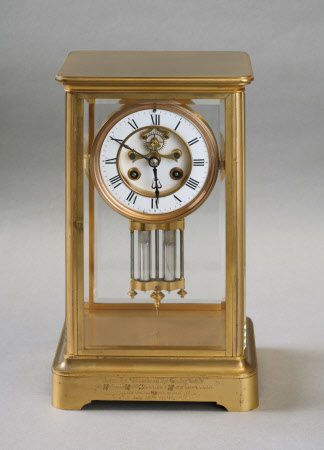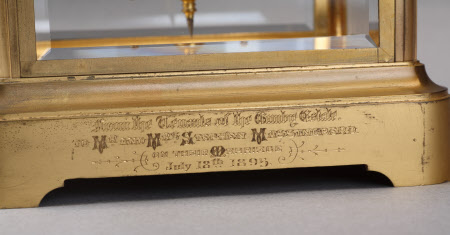Mantel clock
George Graham
Category
Horology
Date
circa 1890
Materials
brass and glass
Measurements
300 x 175 mm
Order this imageCollection
Gunby Hall Estate, Lincolnshire
NT 637410
Summary
A French gilt-brass four-glass mantel clock, circa 1890, 4-inch white enamel dial with inset Brocot escapement; the bell-striking drum movement with mercury compensated pendulum, in case with bevelled glass panels and bearing inscription recording its being given as a wedding present to Mr. & Mrs. Stephen Massingberd in 1895, 11¾ in. / 30cm high. Backplate stamped 'D','7729','57' and Marti exhibition medallion. N.b. the mercury compensated pendulum: this compensates for changes in temperature, although is really more for show in such a relatively humble clock. However, the theory is that with rising temperature the pendulum expands and lengthens, thus making the clock run slower. But as this happens, the mercury expands too, rising in its glass files and compensating for the lengthening pendulum and enabling the clock to keep time. The mercurial pendulum was invented by the famous London clockmaker, George Graham, in 1721, and used in his most accurate longcase clocks known as regulators.
Provenance
1990, purchased from J Montgomery-Massingberd.
Marks and inscriptions
From the tenants of the Gunby Estate to Mr. and Mrs. Stephen Massingberd on their marriage,July 18th 1895.
Makers and roles
George Graham, horologist


